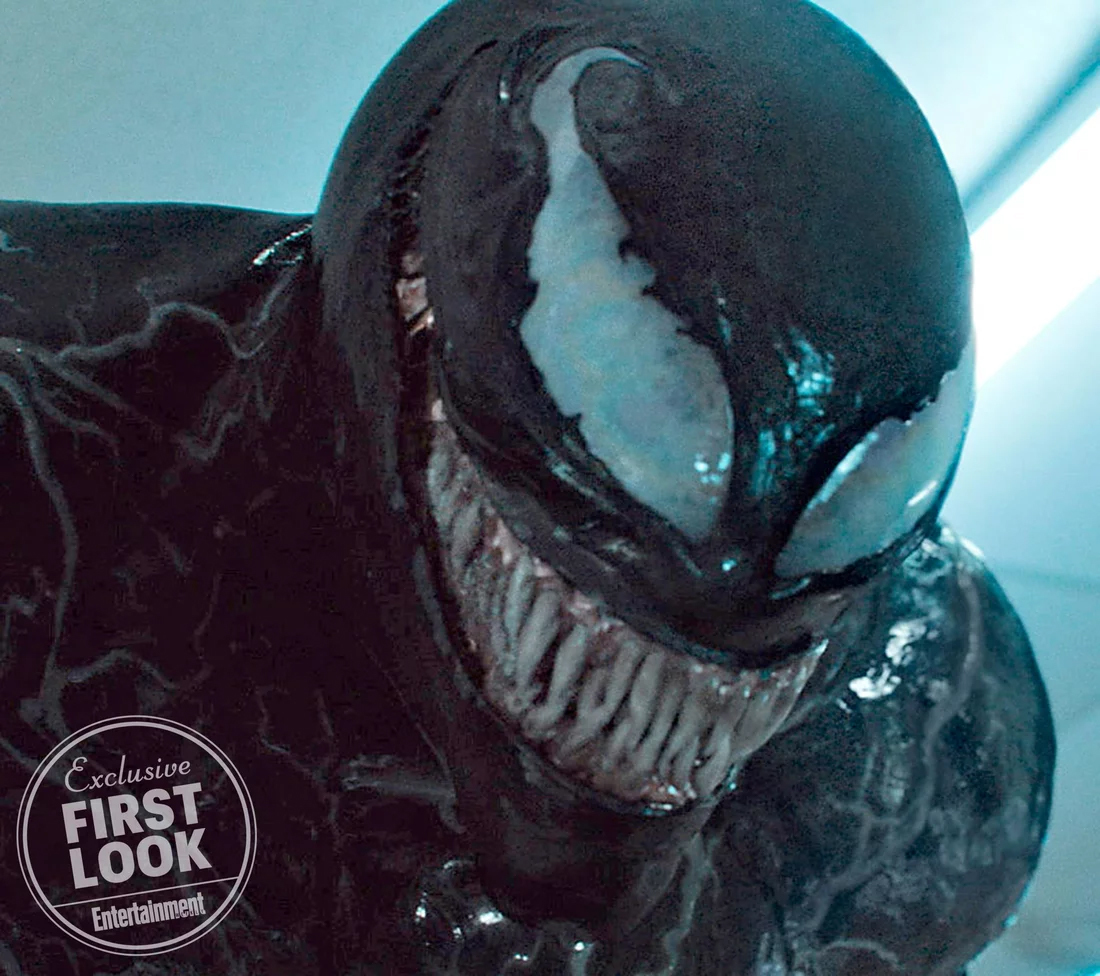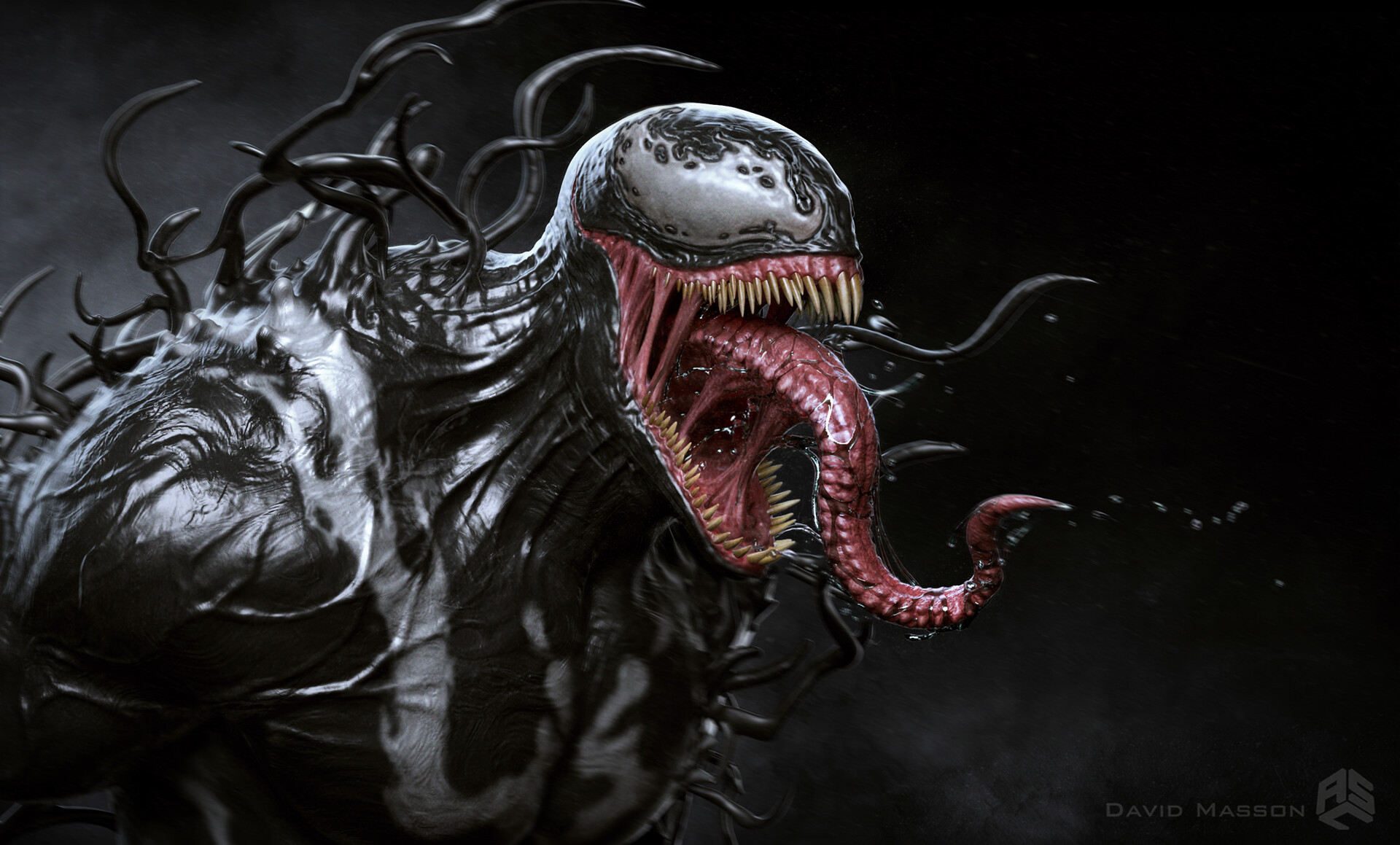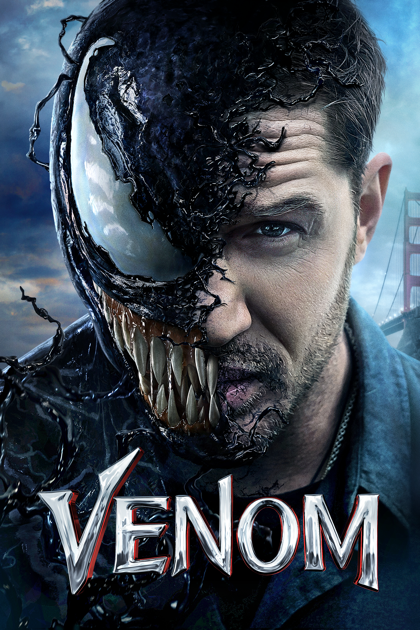Venom Render - Bringing The Symbiote To Life
Have you ever wondered what it takes to bring a character like Venom from the comic pages to the big screen, making him look just right? It's quite a feat, really, to capture the very essence of such a distinct figure, especially one known for being a bit of a wild card. The way Venom looks, his presence, and how he moves are all part of a careful process that aims to make him feel real and impactful for everyone watching. This process of making him appear visually is, in a way, what we mean when we talk about the "venom render."
This character, one of Marvel's more mysterious and, you know, sort of intense figures, made a big splash when he arrived in cinemas. The films, starting with the 2018 picture, really tried to show off his unique qualities. It's about how this creature, a living suit from another planet, appears to us, how his strange form is put together on screen. His look, his texture, how he shifts and changes – these are all key parts of getting the "venom render" just right, so he seems as powerful and unpredictable as he should be.
When folks talk about Venom in the comic universe, they're often thinking about the alien life form itself, this weird organism that needs a host and, apparently, really likes adrenaline. This creature grants its chosen person some pretty remarkable abilities. So, to bring that to life in a movie means a lot of thought goes into every visual detail, every flicker of his form. We'll look at how these films, like the first one, then "Let There Be Carnage," and the upcoming "The Last Dance," have handled the visual presentation of this truly one-of-a-kind being, and how each "venom render" contributes to the overall story.
- Crossfit Craic
- Undress Ai Explore Create With Free Ai Tools
- Waffle House Near Atlanta Airport
- Noticias Univision 41 San Antonio Tx Hoy
- My Fathers Pizza Pasta
Table of Contents
- The Character Who Captured Our Imagination
- What Makes the Venom Render So Striking?
- A Look at the Films and Their Visual Style
- How Did the Venom Render Evolve?
- The Symbiote's On-Screen Appearance
- Is the Venom Render Truly Unique?
- Eddie Brock's Transformation and Its Visuals
- What Challenges Come with a Venom Render?
The Character Who Captured Our Imagination
Venom, as a character, has always held a special spot for many people who enjoy comic stories. He's not your typical good guy, nor is he a straightforward bad guy; he's got this interesting mix that makes him stand out. When he first appeared on the big screen in 2018, with Tom Hardy taking on the main human part, it was a pretty big deal. The film aimed to show us this "lethal protector," a being that, in some respects, looks quite fearsome but also has a strange sense of right and wrong. The way he was made to look, the "venom render" for this picture, was crucial in getting audiences to accept this somewhat unsettling hero.
Think about what makes him so memorable. It's his physical form, isn't it? That dark, fluid, muscular shape, with those big, bright eyes and that truly wide mouth full of sharp teeth. All of these visual elements had to be crafted with a lot of thought. The idea was to make him appear both threatening and, you know, sort of appealing in his own strange way. The creative folks behind the scenes worked hard to make sure that the "venom render" truly captured the wild energy and the slightly unsettling nature of the character, making him feel like a real presence on screen, even though he's from another world.
The character's background, as an organism from a different planet that needs to connect with a living being, plays a big part in his visual presentation. This alien life form, which feeds on things like adrenaline, gives its host special abilities. So, the visuals had to show this connection, this merging of two distinct forms. The "venom render" needed to show the transformation from a regular person to this imposing creature, making it believable and visually striking. It's a tricky balance to strike, making something that looks so alien feel, in a way, grounded enough for a movie audience.
- Nna Netrebko Net Worth
- Nonzero Newsletter
- Barefoot Fursuit
- How Old Is Veeze
- Guillermo Net Worth Jimmy Kimmel
What Makes the Venom Render So Striking?
So, what exactly is it about the way Venom looks on screen that really grabs your attention? Well, for one thing, it's the sheer dynamism of his appearance. He's not just a static figure; he's constantly shifting, flowing, and changing shape, especially when he's moving or engaging in a fight. This fluidity is a key part of his visual appeal, making the "venom render" feel alive and unpredictable. The way his dark, gooey form stretches and contracts, almost like a living shadow, gives him a very unique sort of menace.
Then there are those distinct features: the large, piercing white eyes that stand out against his dark body, and that famously wide grin, showing off a truly impressive set of teeth. These elements are designed to be instantly recognizable and, you know, pretty unsettling. They give him a personality through his look alone. The visual artists responsible for the "venom render" had to ensure these details were consistent and impactful, making him feel like a truly alien presence, yet one with a clear, if unsettling, expression.
Also, consider the contrast. Venom is often shown in darker settings, which makes his glossy, almost wet-looking surface stand out even more. The way light catches on his form, highlighting his musculature and the strange texture of his skin, adds to his visual power. This attention to detail in the lighting and surface qualities is essential for a compelling "venom render," helping to convey his otherworldly origin and his formidable nature. It makes him feel substantial and real, despite his fantastical origins.
A Look at the Films and Their Visual Style
The Venom movies have, in their own way, carved out a distinct visual identity. The first film, released in 2018, introduced us to this character and his specific look. It really leaned into the darker, grittier side of things, using a lot of night scenes and urban settings to highlight Venom's shadowy presence. The "venom render" in this movie aimed to make him feel like a creature of the night, lurking in the shadows, ready to emerge with startling force. The visual effects team had to work hard to make his transformations and actions look seamless within these environments, which is, you know, quite a task.
Then came "Venom: Let There Be Carnage" in 2021, which continued to build on that visual foundation but also brought in another equally striking character, Carnage. This meant the visual artists had to create two distinct, yet related, alien forms, each with their own particular look and movement. The "venom render" for this second film had to maintain consistency with the first, but also allow for the introduction of new visual elements for Carnage, showing how these different symbiotes might interact visually, which, you know, added another layer of complexity.
And now, with "Venom: The Last Dance" on the horizon, we can expect to see further developments in the visual presentation of Venom. Each film offers a chance to refine the "venom render," perhaps making subtle changes to his texture, his movement, or how he interacts with his surroundings. The aim is always to keep the character fresh and visually exciting, while staying true to what makes him so recognizable. It's a continuous process of artistic and technical refinement, ensuring that the visual experience remains engaging for the audience.
How Did the Venom Render Evolve?
Thinking about how Venom's look has changed from the comics to the big screen, and then from one movie to the next, is pretty interesting. In the comics, his appearance has shifted over the years, but there are core elements that always remain. When it came to the 2018 film, the artists had to take those classic comic book designs and figure out how to make them work in a live-action setting. This meant translating a two-dimensional drawing into a three-dimensional, moving figure, which, you know, requires a lot of technical skill and artistic vision to make the "venom render" feel right.
For the first movie, the focus was on establishing Venom's core visual identity: the dark, muscular form, the sharp teeth, the long tongue, and those distinct white eyes. The "venom render" here aimed for a sort of slimy, organic feel, emphasizing his alien nature. They wanted him to look powerful and a little grotesque, in a good way. The visual effects team worked to ensure that his transformations from Eddie Brock were fluid and impactful, showing the symbiote literally crawling over and consuming his host, which is, actually, a very important visual cue.
By the time "Let There Be Carnage" came around, the base "venom render" was already established. The evolution here was more about refining that look and, crucially, creating Carnage as a distinct visual entity. Carnage was designed to be redder, more jagged, and even more chaotic in his movements, providing a stark visual contrast to Venom's smoother, darker form. This required careful planning to ensure both characters looked unique but still belonged to the same alien family. So, the visual evolution was about expanding the visual language of the symbiotes, making each "venom render" unique yet cohesive within the story's world.
The Symbiote's On-Screen Appearance
The Venom symbiote itself is, you know, the real star of the show when it comes to visual effects. This alien organism, which is a living suit, has a very distinct appearance that needed to be translated with great care to the screen. It's not just about making a black monster; it's about making a *living* black monster that looks like it could actually exist. The texture of the "venom render" is often depicted as slick, almost wet, giving it a somewhat unsettling yet organic feel. This visual choice helps to emphasize its alien nature and its ability to flow and shift.
When the symbiote wraps around Eddie Brock, the visual transformation is a key moment. It’s a rapid, somewhat violent process where the black mass envelops him, growing and forming the familiar Venom shape. The way this process looks, the way the "venom render" shows the symbiote extending tendrils and forming new limbs, is vital for conveying its power and its connection to Eddie. It's a visual representation of their strange bond, showing how they become one entity, which is, in fact, quite a visual spectacle.
Furthermore, the way the symbiote moves is a huge part of its on-screen appearance. It’s not just a person in a suit; it’s a creature with its own physics. The "venom render" needs to convey a sense of immense strength and agility, with movements that are often exaggerated and powerful. Whether he’s leaping across rooftops, stretching his limbs to grab something, or delivering a crushing blow, the fluidity and weight of his actions are carefully crafted to make him seem like a truly formidable presence. This attention to how he moves really brings the character to life visually.
Is the Venom Render Truly Unique?
When you look at all the different superhero and creature designs out there, you might wonder if the way Venom looks really stands out. And, you know, it absolutely does. The "venom render" has a very particular aesthetic that sets it apart from many other characters, even within the broad range of comic book adaptations. His dark, fluid, and somewhat grotesque form, combined with those piercing white eyes and that wide, toothy grin, creates an image that is instantly recognizable and, in a way, quite singular.
Many characters have powers or unusual forms, but Venom's appearance is tied so closely to his symbiotic nature. The idea that he is a living suit, constantly shifting and flowing, means his visual presentation is inherently dynamic. This isn't just a costume; it's a living, breathing entity that changes and reacts. This inherent fluidity makes the "venom render" quite special, allowing for a range of expressions and movements that other characters might not possess. It gives him a distinct visual language that is, basically, all his own.
Also, the balance between his intimidating appearance and the occasional moments of odd humor or vulnerability, especially when interacting with Eddie, makes his visual presence even more unique. The "venom render" manages to convey both menace and, at times, a strange sort of charm. This blend of characteristics, shown through his physical design and how he moves, helps him stand out from other, perhaps more straightforward, heroic or villainous figures. It's a testament to the thoughtful design that went into making him feel like a character with real depth, visually speaking.
Eddie Brock's Transformation and Its Visuals
Eddie Brock, played by Tom Hardy, starts his story in a pretty rough spot. He's a journalist who has, you know, lost quite a bit – his job, his partner, and really, his sense of purpose. When his life is at its lowest point, he comes across this alien symbiote, and that's when things really change for him, visually and otherwise. The transformation sequences, where Eddie becomes Venom, are crucial moments in the films, showcasing the "venom render" in action. These scenes are designed to be both thrilling and a little bit unsettling, showing the raw power of the alien life form.
The visual effects team had to work hard to make Eddie's merging with the symbiote look believable. It's not just a sudden change; it's a process where the black, gooey substance creeps over his body, forming the distinct shape of Venom. The way his body contorts, the way the black material stretches and forms, all contribute to the visual impact. This "venom render" of the transformation highlights the struggle and the eventual acceptance Eddie has with his new, powerful, and somewhat demanding partner. It’s a literal visual representation of his life taking a very unexpected turn.
Even when Eddie isn't fully transformed, there are subtle visual cues that show the symbiote's presence. Perhaps a flicker of black on his skin, or a sudden change in his eye color, or even just the way he moves with a new, somewhat unsettling confidence. These smaller visual details, part of the overall "venom render," help to remind the audience that the alien is always there, lurking beneath the surface, ready to emerge. It creates a constant sense of anticipation and adds depth to Eddie's character, showing the ongoing influence of the symbiote on his physical being.
What Challenges Come with a Venom Render?
Bringing a character like Venom to life on screen comes with a lot of interesting challenges for the visual effects artists. One of the main difficulties is making a character that is essentially a shapeless, flowing mass look solid and powerful, yet still retain that liquid quality. The "venom render" needs to convey weight and impact during fights, but also appear fluid and organic when he's moving or transforming. Balancing these two very different visual requirements is, you know, quite a balancing act.
Another big challenge is creating a creature that can be both terrifying and, at times, somewhat comical or relatable. Venom has a very distinct personality, and his visual appearance needs to support that range of emotions and actions. The "venom render" has to be versatile enough to show him as a brutal fighter one moment, and then as a somewhat awkward, talking head the next. Getting those subtle visual cues right, especially around his eyes and mouth, is really important for conveying his character without words.
Finally, making sure the "venom render" interacts realistically with the environment and other characters is a huge hurdle. When Venom throws a punch, the impact needs to look real. When he's running through a city, he needs to feel like he's actually there, interacting with the ground and the buildings. These kinds of details, like how light reflects off his glossy surface or how he casts shadows, are vital for making the visual effects feel truly integrated into the live-action footage. It's a painstaking process, but it's what makes the character feel truly present and believable on screen.
- Sunshine4445 Onlyfans
- Covfefechan Mom
- Paul Mccartney Angela Lansbury
- Nna Netrebko Net Worth
- Melissa Shawty

Venom: Here's A Close Look At The Marvel Character In The New Movie

VENOM Director Ruben Fleischer Reveals Why He Didn't Return To Take The

Venom on Apple TV